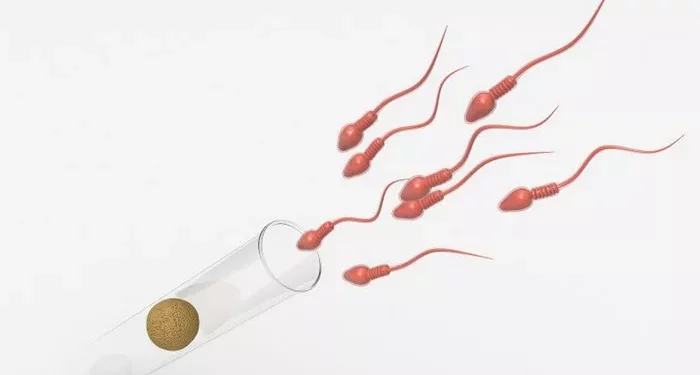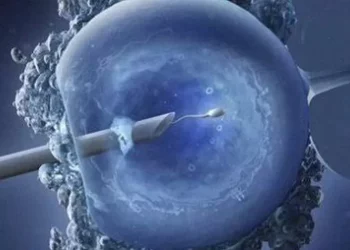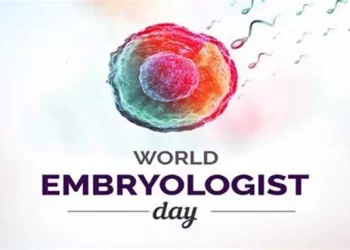Obstructive azoospermia is a medical condition characterized by the absence of sperm in the ejaculate due to a blockage in the male reproductive tract. This blockage prevents sperm from mixing with the seminal fluid, making natural conception impossible. While this condition can be a significant barrier to fertility, advances in medical treatments offer hope for couples aspiring to conceive. It is crucial to seek professional help for accurate diagnosis and to explore the most effective treatment options available.
Causes of Obstructive Azoospermia
Obstructive azoospermia can result from various blockages within the male reproductive system, including the vas deferens, epididymis, and ejaculatory ducts. Understanding the underlying causes is essential for determining the appropriate treatment approach.
Common Causes
1. Blockages in the Vas Deferens: The vas deferens is a tube that carries sperm from the testicles to the urethra. Blockages in this tube can occur due to congenital defects, infections, or injuries. Such obstructions can prevent sperm from reaching the ejaculate.
2. Blockages in the Epididymis: The epididymis is a coiled tube where sperm mature and are stored. Infections or inflammations such as epididymitis can lead to scarring and blockages, hindering the passage of sperm.
3. Blockages in the Ejaculatory Ducts: The ejaculatory ducts are responsible for transporting sperm from the vas deferens to the urethra. Blockages here can result from cysts, infections, or congenital abnormalities, leading to the absence of sperm in the semen.
Potential Causes from Previous Surgeries or Infections
1. Surgical Interventions: Previous surgeries, particularly those involving the groin or reproductive organs, can lead to scarring and blockages in the reproductive tract. Vasectomy, a common form of male contraception, intentionally blocks the vas deferens but can be reversed in many cases.
2. Infections: Infections such as sexually transmitted infections (STIs) or other bacterial infections can cause inflammation and scarring in the reproductive tract. Conditions like epididymitis or prostatitis can lead to obstructions if not properly treated.
Treatment Options for Obstructive Azoospermia
Addressing obstructive azoospermia typically involves surgical interventions or assisted reproductive technologies (ART). The choice of treatment depends on the location and cause of the blockage, as well as the overall health and fertility goals of the patient.
Surgical Intervention
1. Vasectomy Reversal: For men who have undergone a vasectomy, a vasectomy reversal can restore the flow of sperm by reconnecting the severed ends of the vas deferens. This microsurgical procedure is performed under a microscope to ensure precision and improve success rates.
2. Microsurgical Epididymal Sperm Aspiration (MESA): For blockages in the epididymis, MESA involves using a microscope to precisely extract sperm directly from the epididymis. This procedure is often performed when blockages are due to infections or congenital defects.
3. Transurethral Resection of the Ejaculatory Ducts (TURED): When blockages are located in the ejaculatory ducts, TURED can be performed to remove the obstruction. This procedure involves resecting or opening the ducts to allow sperm to pass through.
See also: Causes and Treatment Options of Hypospermatogenesis
Sperm Retrieval Techniques
In cases where surgical correction of the blockage is not possible or successful, sperm retrieval techniques can be employed to obtain sperm directly from the testicles for use in assisted reproductive technologies.
1. Testicular Sperm Aspiration (TESA): TESA involves using a fine needle to aspirate sperm directly from the testicles. This technique is minimally invasive and can be performed under local anesthesia. The retrieved sperm is then used in intracytoplasmic sperm injection (ICSI), a form of in vitro fertilization (IVF).
2. Percutaneous Epididymal Sperm Aspiration (PESA): Similar to TESA, PESA involves extracting sperm from the epididymis using a fine needle. This method is also minimally invasive and can be combined with ICSI to achieve pregnancy.
Considering Assisted Reproductive Technology (ART)
When dealing with obstructive azoospermia, ART provides viable options for achieving pregnancy. These techniques involve retrieving sperm and using them in conjunction with IVF and ICSI.
IVF with ICSI
Intracytoplasmic sperm injection (ICSI) is a specialized form of IVF that involves injecting a single sperm directly into an egg to facilitate fertilization. This technique is particularly useful in cases of obstructive azoospermia, where the number of retrieved sperm may be limited.
1. Procedure: The process begins with the retrieval of sperm through TESA, PESA, or another method. Simultaneously, the female partner undergoes ovarian stimulation to produce multiple eggs, which are then retrieved. Under a microscope, a single sperm is injected into each egg. The fertilized eggs, now embryos, are cultured for a few days before being transferred to the uterus for implantation.
2. Success Rates: The success rates of IVF with ICSI vary depending on several factors, including the age of the female partner, the quality of the eggs, and the overall fertility health of both partners. On average, the success rates range from 20% to 40% per cycle.
Other ART Options
Depending on the specific situation, other ART options may be considered:
1. Donor Sperm: In cases where viable sperm cannot be retrieved, using donor sperm is an option. This involves selecting a sperm donor, and the donated sperm is used in IVF or intrauterine insemination (IUI).
2. Cryopreservation: For men who undergo surgical sperm retrieval, cryopreservation (freezing) of sperm can be considered. This allows for multiple attempts at IVF/ICSI without the need for repeated sperm retrieval procedures.
See also: Male Infertility: A Comprehensive Guide to Azoospermia
Recovery and Prognosis
Recovery and prognosis after treatment for obstructive azoospermia depend on the specific procedure performed and the individual’s overall health.
Post-Operative Care and Recovery Expectations
1. Surgical Procedures: Recovery from microsurgical procedures like vasectomy reversal or MESA typically involves a few days of rest and avoiding strenuous activities. Pain and swelling can be managed with prescribed medications, and patients are usually advised to wear supportive underwear to reduce discomfort.
2. TESA/PESA Procedures: These minimally invasive procedures generally have a shorter recovery time. Patients can often resume normal activities within a day or two, with minimal discomfort.
Success Rates for Different Treatment Options
1. Vasectomy Reversal: The success of vasectomy reversal depends on the time elapsed since the vasectomy and the skill of the surgeon. Pregnancy rates range from 30% to 90%, with higher success rates seen when the reversal is performed within 10 years of the vasectomy.
2. MESA and TURED: The success of these procedures in restoring fertility varies based on the underlying cause of the obstruction and the expertise of the surgical team. Pregnancy rates can range from 20% to 60%.
3. IVF with ICSI: As mentioned earlier, success rates for IVF with ICSI are influenced by multiple factors, with average rates between 20% to 40% per cycle.
Conclusion
Obstructive azoospermia, though a challenging condition, does not signify the end of the road for those wishing to conceive. With advancements in surgical techniques and assisted reproductive technologies, many men with this condition can father biological children. The importance of individualized treatment plans based on accurate diagnosis cannot be overstated. By seeking professional guidance from a urologist or fertility specialist, patients can explore the most suitable options and maintain a positive outlook on achieving pregnancy. Professional help ensures the best possible outcomes, offering hope and a path forward for couples on their journey to parenthood.
Related Topics:
7 Causes of Azoospermia: Everything You Need To Know



























